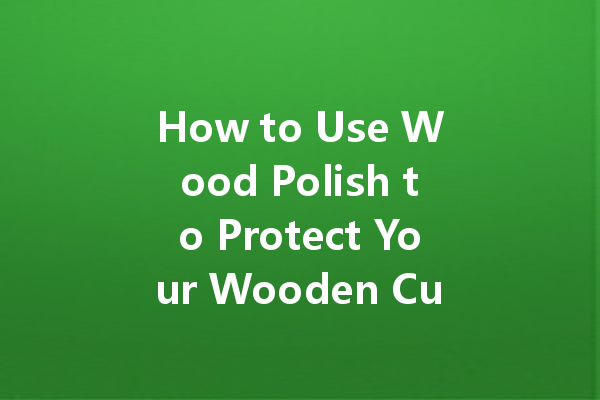Wooden cutting boards are a staple in many kitchens, prized for their durability and aesthetic appeal. However, without proper care, they can quickly lose their charm and functionality. One effective way to maintain and protect your wooden cutting boards is by using wood polish. In this guide, we will explore how to use polimento de madeira effectively to ensure your cutting boards remain in excellent condition for years to come.
Compreender a importância do polimento da madeira
Before diving into the practical application of wood polish, it’s crucial to understand what it does. Wood polish acts as a protective barrier that helps shield your cutting boards from moisture, stains, and scratches. It can also enhance the natural beauty of the wood, making it look fresh and vibrant. Regular polishing not only prolongs the lifespan of your cutting boards but also maintains hygiene, as a well-polished surface can be easier to clean.
Seleção do polimento de madeira adequado
When choosing a wood polish for your cutting boards, consider the ingredients. It’s best to opt for food-safe polishes since cutting boards often come into contact with food. Mineral oil, beeswax, or natural oil blends are great options. Avoid polishes that contain harmful chemicals or additives, as these can seep into your food and pose health risks.
Diferentes tipos de polimento de madeira
Steps to Polish Your Wooden Cutting Boards
Step 1: Clean the Cutting Board
Before applying wood polish, ensure your cutting board is clean. Use a mild soap and warm water to remove any food particles or stains. After washing, rinse the board and allow it to dry completely before proceeding with polishing.
Step 2: Apply the Wood Polish
Using a soft, lint-free cloth, apply a generous amount of wood polish to the surface of the cutting board. If you’re using mineral oil, pour a small amount directly onto the board. For beeswax or oil blends, scoop out a small amount with your cloth.
Step 3: Spread Evenly
Gently rub the polish into the wood using circular motions. Ensure that the polish is evenly distributed across the surface of the cutting board, focusing on any areas that appear dry or have lost their sheen.

Step 4: Allow to Absorb
After applying the polish, let it sit for at least 15-30 minutes to allow the wood to absorb the oil. You can leave it on for longer if you want deeper conditioning, but avoid letting it dry out completely.
Step 5: Wipe Away Excess
Once the polish has had time to soak in, take a clean, dry cloth and gently buff the cutting board, removing any excess polish. This step helps to ensure that the surface remains smooth and free from sticky residues.
Com que frequência se deve polir?
The frequency of polishing your cutting board depends on usage. If you use your cutting board daily, consider polishing it once a month. For occasional use, once every few months should suffice. Always keep an eye on the wood; if it appears dry or dull, it’s time for another polish.
Additional Care Tips for Wooden Cutting Boards
Avoid Soaking
Never soak your wooden cutting boards in water or put them in the dishwasher, as this can cause the wood to warp or crack. Instead, wash them quickly and dry them immediately.
Armazenar corretamente
Store your cutting boards in a dry place and avoid exposing them to direct sunlight or heat. This can prevent the wood from drying out and cracking.
Use a Separate Board for Raw Meat
To maintain hygiene and prevent cross-contamination, use a separate cutting board for raw meat, poultry, and fish. This will help keep your wooden cutting boards in top shape.
Conclusão
Wood polish is essential for maintaining the beauty and longevity of your wooden cutting boards. By selecting the right polish and following proper application techniques, you can ensure your cutting boards remain functional and visually appealing. Remember that regular maintenance pays off in the long run, allowing you to enjoy your wooden kitchen essentials for many years to come. Happy polishing!
